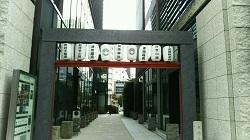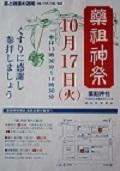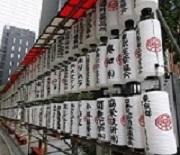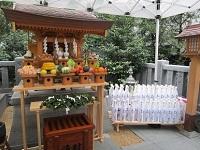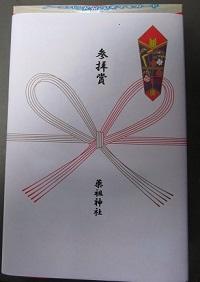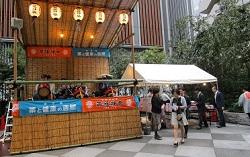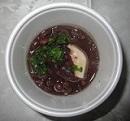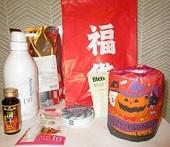The weather was good for the first time in a long time after a typhoon, so I hanged and went to Tsukuda.
Today's Tsukuda originates from Ishikawajima and Tsukuda Island in the Edo period.
Today, I was hanging around the former Tsukuda Island and the current Tsukuda 1-chome.
As you all know, Tsukuda Island follows village headman Magoemon Mori in Tsukuda Village, Nishinari-gun, Settsu Kuni.
It is an island built by fishermen who descended to Edo.
Sumiyoshi-jinja Shirine began with the separation of Sumiyoshi-jinja Shirine in Tsukudamura, Nishinari-gun, Settsu-kuni in 1646.
Sumiyoshi-jinja Shirine's ceramic flats and basins are one of the highlights.
The flat amount is due to the dyeing brush of Prince Arisugawa Miyanobori.
In addition, there are sailing boats and scenery of clam digging in the open space of the basin.
The scenery of Tsukuda Island is carved.
On the back of the basin of the basin of the basin, it is engraved with "1841 Ox New Year Shirakogumi".
Both Sumiyoshi-jinja Shirine pottery flats and basins are registered in the ward Tangible Cultural Property.
In addition, there is a Gosei Kawayanagi and Mizutani Ryotei monument on the grounds of Sumiyoshi-jinja Shirine, which is said to be "a soft and hard".
The phrase "human heart" is engraved.
After passing through the torii gate of Sumiyoshi-jinja Shirine and walking toward the Sumida River, you will see the stone monument at the site of the Tsukuda Island ferryboat.
I'll come in. The ferry was abolished in 1964 with the completion of Tsukuda-ohashi Bridge.
Nearby, three Tsukudani shops that have continued since the Edo period are still open.
Next to the ruins of Tsukuda Island Ferry Terminal, there is the Tsukuda Machikado Exhibition Hall, a lion head and portable shrine.
You can see it.
If you look at the former Ishikawajima area with Sumiyoshi Kobashi on your right, you can see the ruins of Ishikawajima Lighthouse.
You can do it. In addition, you can see the Sumiyoshi sluice gate seriously.
Sluice gates are usually open for entry and exit of ships, but during storm surges and tsunamis.
It is said that it will be closed to protect the lives and property of local residents.
As I walked through Tsukuda, there were several active wells.
And it's Kobashi Tsukuda. In Tsukuda Kobashi, the pillar of the large banner used at the festival of Sumiyoshi-jinja Shirine is corrupted.
It is buried at the bottom of the river to prevent it. On the white sign, "This place is
It was allowed to be built by Tokugawa shogunate in the late Edo period (1798).
The pillars and hugs of the large banner are buried, so you can enter and dig up.
Don't do it. It was written as Sumiyoshi Tsukuda.
And the last photo shows "River City 21" towering behind Tsukuda Kobashi.
This is a group of high-rise apartments. Do you match this emotional cityscape of Tsukuda?
Don't you do it? I didn't know well. ・・・
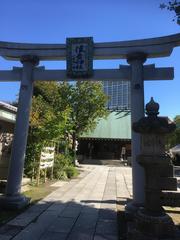
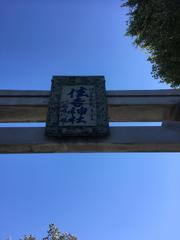
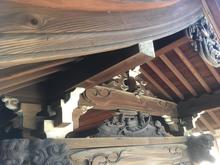
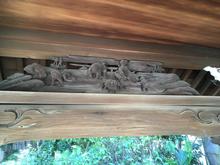
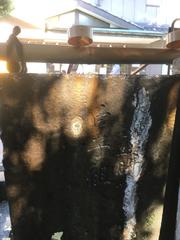
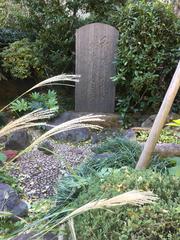
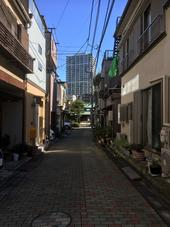


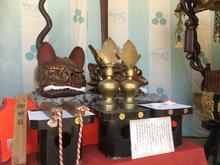
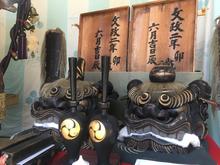
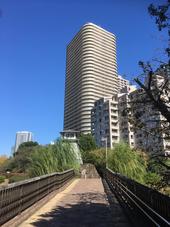
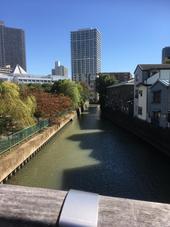
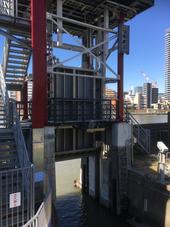
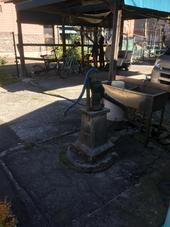
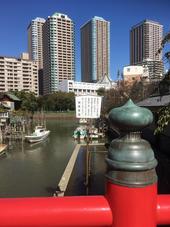
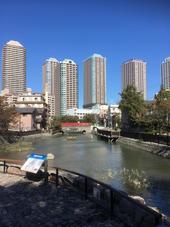
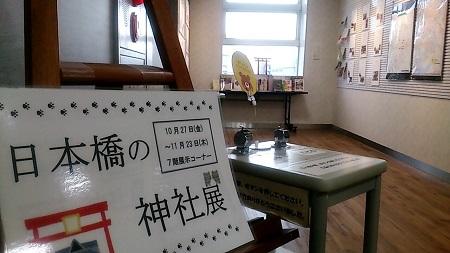

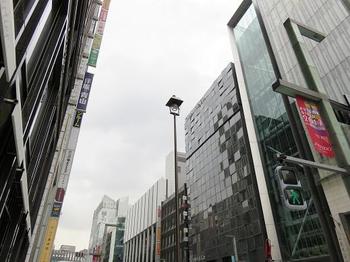
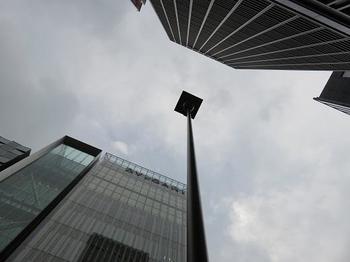
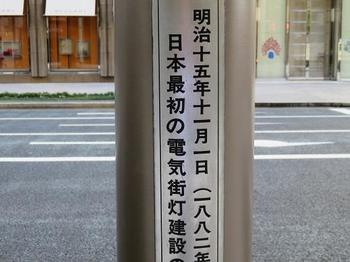
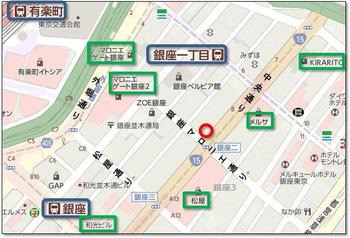
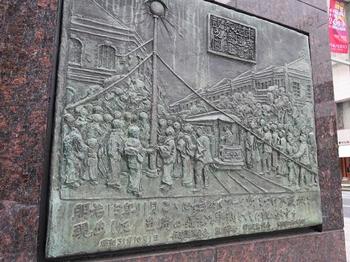
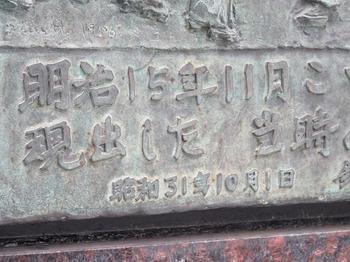
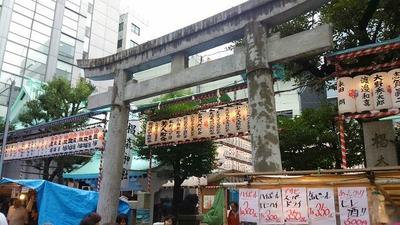
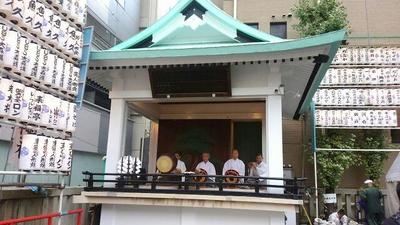
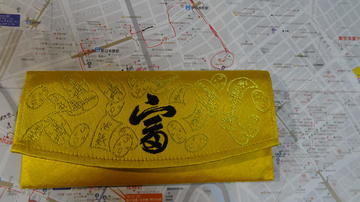
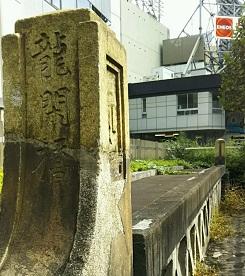 Ryukanbashi, which connects Ryuka-cho (currently Uchikanda) and the former Hon-Shiroganemachi (currently Honishi-cho), is a very rare bridge of Japan's first reinforced concrete traft bridge built in 1923. It is said that it is derived from the fact that there was a house of the former Shogunate monk "Ryukan Inoue".
Ryukanbashi, which connects Ryuka-cho (currently Uchikanda) and the former Hon-Shiroganemachi (currently Honishi-cho), is a very rare bridge of Japan's first reinforced concrete traft bridge built in 1923. It is said that it is derived from the fact that there was a house of the former Shogunate monk "Ryukan Inoue".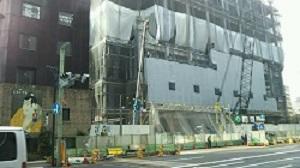 The story of the rakugo "Nagasaki no Akahan" begins when the father of the
The story of the rakugo "Nagasaki no Akahan" begins when the father of the 